You love cuddling with your dog, most especially when its coat is clean and soft. But what are you going to do if your furry baby starts to look more like a tramp, instead of a fresh and hygienic doggo and you cannot get it to the groomer? Why don’t you try grooming your dog at home? You might be asking, ‘How to groom your dog at home?’ Well, I got your back!
If you have a dog or are thinking of welcoming a dog into your life, it is very important that you know about bathing and grooming care. Grooming your dog will not just keep it healthy and clean, it will also be essential for you & your home.
All the necessary things you need to learn about how to groom your dog at home, we will discuss in this post. So without further ado, let’s get started!
Contents
Grooming Tools
Grooming your dog at home is quite simple, yet it is necessary that you have some basic knowledge of the different grooming practices. This will assist you in achieving a good result, as well as keep your dog safe & comfortable while it’s being groomed.
In this section, we will discuss the best tools that you can use for the job. These grooming tools are very important in doing the task. Make sure that before you start grooming your pooch, you have all the necessary tools laid out.
Here are some of the main grooming tools that you will need:
- Shampoo. You should use a high-quality shampoo that is free from any harsh chemicals. You need to look at a shampoo that is particularly designed for dogs. Watering down the shampoo with water will make it much easier to wash later.
- Clippers. You need to choose a reliable and well-made pair of clippers. Remember, it is always the best to choose clippers that are meant for dogs, as they are much easier to use and are safer, compared to the clippers made for humans.
- Scissors. The best choice of scissors for grooming your dog is a sharp, professional-grade pair of scissors. Scissors of this kind will cut hair so easily without pulling or snagging.
- Comb or Brush. It is important that you have a high-quality comb or brush. For dogs that have long coats or furs, it is always a good choice to opt for metal-pinned brushes. On the other hand, if you have a short-haired dog, a brush that has rabbit teeth may work just fine.
Now that you know the different essential grooming tools, let us now move on to the proper grooming of your dog at home. Let’s start with bathing!
Bathing Your Dog
You might be wondering, Why should you bathe your dog? Well, bathing your dog when necessary is actually a significant part of the overall pet care. For dogs who have healthy coat and skin, the most typical reason to bathe is to get rid of the unpleasant odor or because they have acquired dirt on their coat.
Furthermore, the benefits of bathing may include cleaning the coat and skin. This helps in getting rid of loose hair, debris, and scale; as well as to improve the shine of the hair coat. For dogs that have particular skin conditions, bathing might be a part of their medical treatment plan, as per the advice of their veterinarian.
How often should you bathe your dog may depend on your dog, as well as their particular needs. Basically, dogs must only be bathed when needed. It is commonly necessary when it smells bad or have accrued mud or dirt on their fur.
Brushing Your Dog
Once the coat of your dog is already dry, brush it painstakingly to remove matted, tangled, and dead hair. Combing and/or brushing the hair of your dog is so important. It actually helps in keeping the dog’s coat in great shape. Not only that, but it also helps in distributing healthy natural skin oils all over the hair shaft, thus promoting a shiny coat and helping the dirt to slide off its hair. This may also help in reducing the need to bath the dog, and hence reducing the frequency of taking a bath.
Brushing your dog does not just benefit your dog, you also benefit from doing it. In the actual fact, it helps in strengthening the positive relationship bond between you and your dog. It must be a comfortable and pleasant experience for both of you.
Just like in bathing your dog, how often should you brush your dog will depend on your dog itself. Remember, dogs have different brushing needs since they don’t have the same coat type and latest activities.
Dogs must be brushed ‘as needed’. Pet owners must monitor their dog’s coat for any conditions, looking formats, tangles, or dullness that indicates that they may need a brush.
Cutting Your Dog’s Hair
Aside from brushing, some dogs may also need their hair cut or trimmed occasionally. Your local vet clinic may advise and show you how you can safely trim your dog’s coat at home. If you are not confident enough to cut your dog’s hair on your own, you may also hire a professional groomer.
For some dogs, the common body areas that may need regular trimming include:
- Areas where there are tangles and hair mats
- Areas where debris are trapped in the hair
- Hair around the lower jaw and chin that traps food
- Hair around the anus that traps feces
- Areas around the eyes, in case the hair is obscuring the vision or is causing irritation.
Even though you want to cut your dog’s hair by yourself at home, it is still important that you ask your veterinarian for advice. Furthermore, you should never point scissors towards your dog and you need to take extra care when cutting hair around the eyes.
To calm the behavior of your dog so it will behave while you cut its hair, you can use food treats as a reward.
Caring For Your Dog’s Eyes, Ears, Nails, Teeth, And Paws
For more detailed information on taking care of your dog’s eyes, ears, nails, teeth, and paws, read on below:
Eyes
To keep your dog’s eyes healthy, you should:
- Always monitor the eye health of your dog.
- Hair around its eyes should be trimmed carefully, in order to prevent any irritation. You should use blunt-nosed safety, professional-grade scissors.
- If you notice any changes in the eyes of your dog. These may get worse speedily.
- If your dog’s eyes are healthy, it should appear bright and clear. They are also commonly symmetrical.
Ears
In order to make sure that your dog’s ears are healthy, it is important that you know the different signs of ear problems. These include ear discharge, swelling or redness, head shaking, sensitivity, and more.
- Pay your vet a visit if you think your dog has an ear infection to have it checked.
- Veterinarians commonly do routine ear check-ups with an otoscope. They will prescribe some medications if any problem is present.
- Dogs that have long hanging ears are prone to recurrent ear infections or allergies. Thus, monitoring is very important.
Nails
You should always follow the proper way of trimming your dog’s nail to avoid hurting your dog.
- You should only trim your dog’s nails when needed.
- When the nails are starting to get too long, you can trim it –but only a small amount off its tip.
- Talk to your vet on how to properly trim nails. They are the ones who have been trained to do it safely. They can advise you on what you should and what you should not do.
Note: A sufficient regular exercise may help in keeping your dog’s nails in good shape and at a good length, as well.
Teeth
In order to help in keeping your dog’s gum and teeth healthy, you should:
- Give your dog chewing items regularly. This is a natural behavior for dogs and it is important for them to have regular opportunities to chew on chewing items. These items may include dental chews and chew toys.
- You might also provide raw meaty bones once or even twice per week. Bear in mind that bones should be human-grade and raw.
- Ask your vet what you can give your dog to make its teeth and gums healthy.
Paws
If you want your dog to have a healthy paw, you should:
- See if your dog is limping.
- Check its footpads and feet regularly to make sure that there are no infections or wounds.
- Some dogs may have extra hair in between their footpads –these may catch debris or become matted. Trim it carefully.
- Get rid of any debris like burrs and grass seeds around the paws.
What To Avoid In Grooming Your Dog At Home?
Here are the things that you should avoid doing when grooming your dog at home:
- Do not rush as it may cause stress to your dog.
- Do not restrain your dog by gripping its fur.
- Do not use scented shampoos, as chemicals may irritate your dog’s nose and skin.
- Do not bath your dog too frequently.
- Do not overwhelm your dog by doing a lot of tasks all at once.
- Do not trim your dog’s nail too short –it might be painful.
- Do not forget to clean the ears of your dog.
- Do not ever disregard your grooming tools.
- Do not bathe your dog outdoors when you are in a cold place.
- Do not give up –your dog might be impatient while grooming, but that doesn’t mean you should give up on him.
Final Say
Combining hygiene, home grooming, plus regular professional grooming visits will leave your dog’s eyes, ears, nails, teeth, coat, and paws clean and healthy –making not just him but everyone at home happy.
Bear in your mind that you are your dog’s biggest protector and advocate. By knowing how to properly and confidently groom, you will avoid any injuries. It is so common that dogs become anxious in unfamiliar conditions. The best way for you to ensure that your dog stays calm all throughout the grooming is to launch a consistent grooming practice as early as possible.
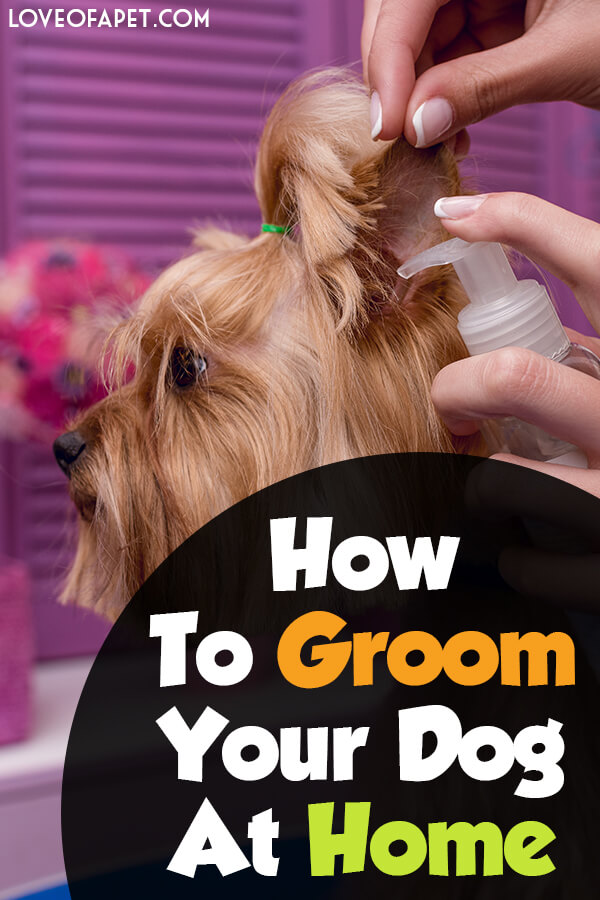
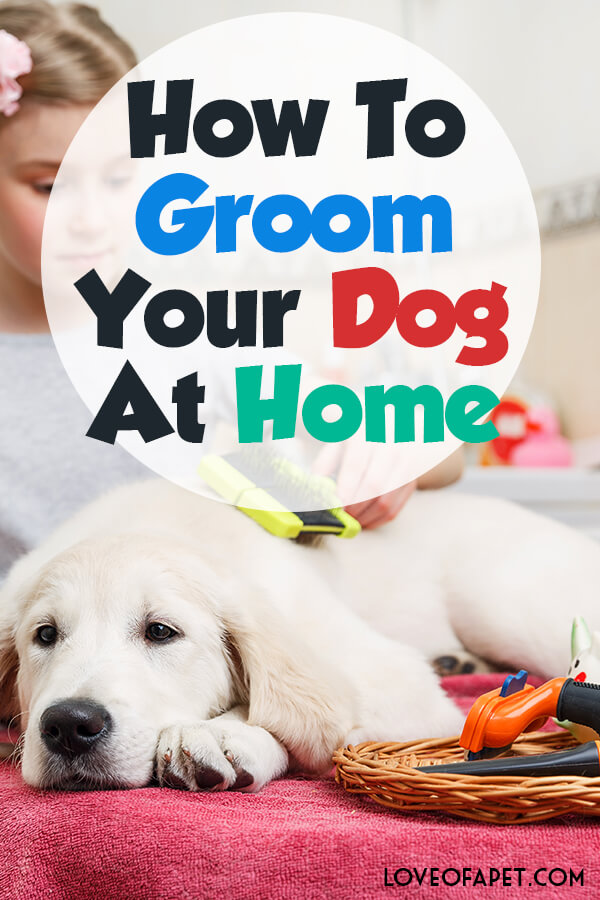

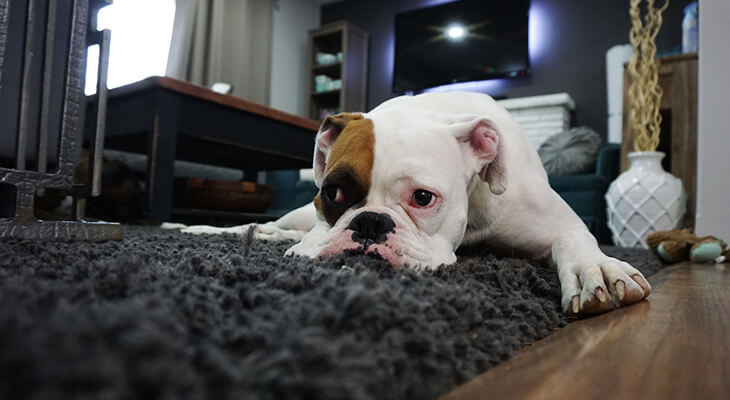
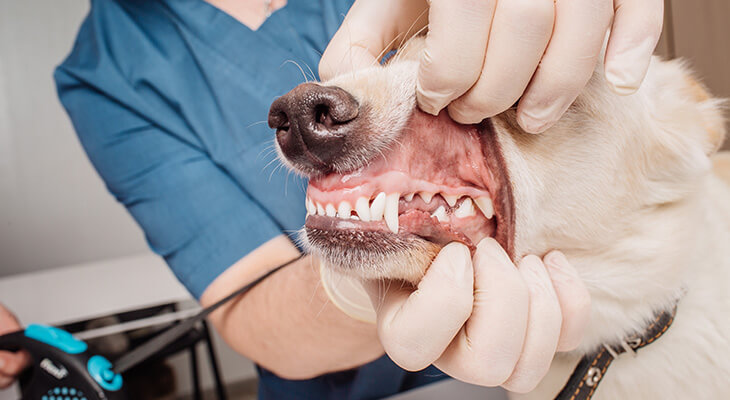
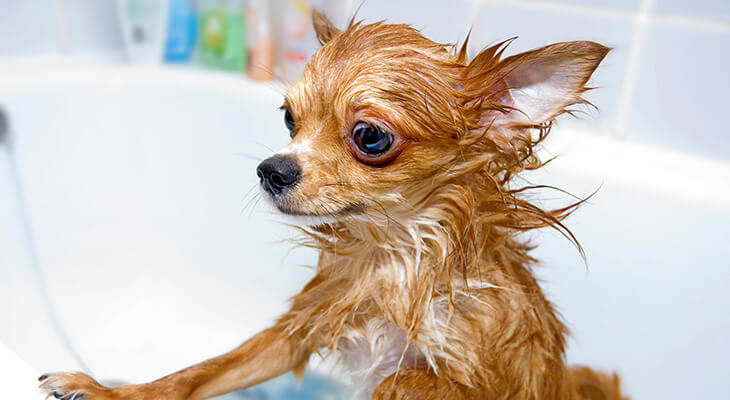
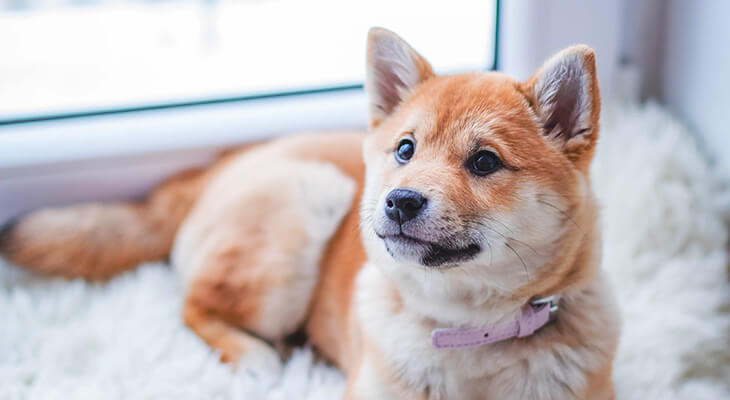
I need to know how to keep my doggie still. Is there a way to put together a brace (don’t know the name) like the groomers use to hold the dog in place?
You can use the grooming arm with clamp to control your dog’s movement, like this one here.